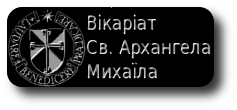
The Neocatechumenate's Charisma and Strength
Category:
- Neocatechumenate
Before starting their evangelizing activities, Kiko and Carmen asked themselves: where did the strength of the early Church lie, and what accounts for weakness in the modern Church?
The answers are to be found in the "Neocatechumenate Way" they eventually mapped out: post-baptismal Christian initiation realized with the methods and forms of the early Church.
The Neocatechumenate movement has revolutionalized parish life in the churches to which it has been called. No longer do sociological criteria divide groups by age - children, adults, the elderly. Parishes rather become true communities of 30-50 individuals of diverse ages, social conditions, mentalities, and cultural backgrounds, growing together in faith and commitment. These communities act in the parishes with a "tripod" basis of catechesis (as suggested by Vatican II): Word, Liturgy, and Community.
For the Neocatechumenate movement, the Word implies the proclaiming of the Gospel (Kerygma) anywhere and everywhere; the Liturgy represents the celebration of Faith, within which all the symbols of tradition are remembered; and the Community (Koinonia) signifies the communion between those who have heard the Word and those who live in the unity of love under the sign of the Cross.
The Neocatechumenate community celebrates Mass with slight variations conceded by the Congregation of the Divine Liturgy and Sacraments (Note of December 19, 1988). After the three Scripture readings and before the homily, members engage in commentary, comparing their readings with their personal experiences. The homily then takes account of the observations made, corrects deviations, and stimulates reflection. Next, as in the Ambrosian rite, is the Rite of Peace. The rite of the Eucharist follows early Christian practices, using unleavened bread and wine.
The re-discovery of the liturgy has been a determinant factor in overcoming cynicism and indifference, especially affecting Catholics in the prosperous and comfortable Western world.
At present, thousands of parishes have passed from a state of limited activity to one of florid growth thanks to the Neocatechumenate. (In Spain in recent years, there has been a 17.5% growth in parishes with Neocatechumenate leadership.)
Neocatechumenate communities have been able to overcome two serious problems in today's Church: defections among the young and among couples.
In the Roman diocese alone, where 25% of the parishes are Neocatechumenates, 50% of the members are persons 25-50 years - the age group most minimally represented in other Italian parishes. As for couples, the average birth rate in the Roman diocese is 3.11%, considerably higher than the national average of 1.2 children per woman.
The teachings of Kiko and Carmen are based on two main Scriptural passages. The first refers to love: "As I loved you, so you should love one another... By this love, all will recognize that you are my disciples" (John 13: 34-35).
The second passage refers to death. In Chapter 2 of the Letters to the Hebrews, it is taught that Jesus Christ has come to "destroy the mediator of death, the Lord of death, i.e. the Devil, and to free those, in fear of death, who were subjected to this slavery during life" (Hebrews 2: 14-15). This victory over death is the essential Christian message Jesus left us, and it is central to the teachings of the Neocatechumenate movement.
http://ourworld.compuserve.com/homepages/ronald_haynes/neocat1.htm














